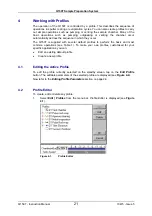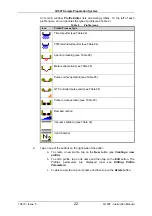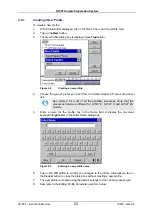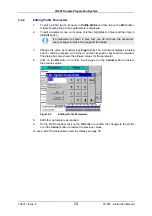
Q150T Sample Preparation System
Q150T - Instruction Manual
9
10473 - Issue 5
1.2
Sputter Coating
Sputter Coaters are used in Scanning Electron Microscopy to provide an electrically
conductive thin film representative of the surface topography of the specimen to be
viewed, such films inhibit 'charging', reduce thermal damage, and enhance secondary
electron emission.
The Q150T S and Q150T ES employ a magnetron sputter target assembly. This
enhances the efficiency of the process using low voltages and giving a fine-grain (order
of 0.5nm Cr grain size), cool sputtering. The unit features a rotating sample table
ensuring even depositions (typically 5nm). It uses standard targets, avoiding the
necessity of special large profile targets. The instrument is fitted with a 57mm diameter
quick-change target (the sample chamber is 165mm in diameter) giving optimum
consumable cost performance. Alternative target materials are available.
A shutter assembly is fitted as standard, which allows sputter cleaning of oxidising
targets.
1.3
Carbon Coating
Carbon films, because of their mechanical stability, good electrical conductivity, and low
background signal are commonly used to prepare samples for Electron Microscopy
(EM).
Thin films of about 5 nm (50A) are used for particle support and as an isolating layer in
autoradiography. Thicker films are used in Scanning Electron Microscopy (SEM) also for
support, in addition to coating for X-Ray Microanalysis. In general, there is a need for all
these films to be fine grain, even coating, with uniform and reproducible film thickness.
The most common form of deposition is from resistance heated carbon rods. The rods
are shaped to achieve high current density with sufficient temperature to cause
evaporation. Carbon filaments can also be used, which at high temperature burn quickly,
from which has evolved the terminology: Carbon 'Flash' Evaporation. The resulting short
coating times and reduced total power input distinguishes it from the somewhat longer
process of carbon rod evaporation.
Q150T E and ES models feature a multi-change head system for Carbon rod, Carbon
fibre and metal evaporation.
1.4
Metal Evaporation
By vaporizing a metal film onto a sample, it is possible to enhance the topographic detail
for high resolution analyses by TEM or SEM. This technique is particularly useful in the
analysis of biological specimens. The metal evaporant, usually a wire of, for example,
platinum or gold, is heated and vaporised by a filament (typically made of tungsten).
For downwards evaporation, evaporants usually in the form of wire: e.g gold, platinum,
aluminium, etc are placed directly onto the filament. For upwards evaporation, the
evaporant is placed in a ‘boat’ (typically made of molybdenum or tungsten).
The Q150T E and ES can be configured for metal evaporation in an upwards or
downwards direction.
1.5
Aperture Cleaning
In its metal evaporation configuration, you can use a Q150T E or Q150T ES to clean
aperture strips and other electron microscope components. With the component placed
in a molybdenum boat, it can be heated to evaporate contaminants.
Содержание Q150T S
Страница 92: ......
























